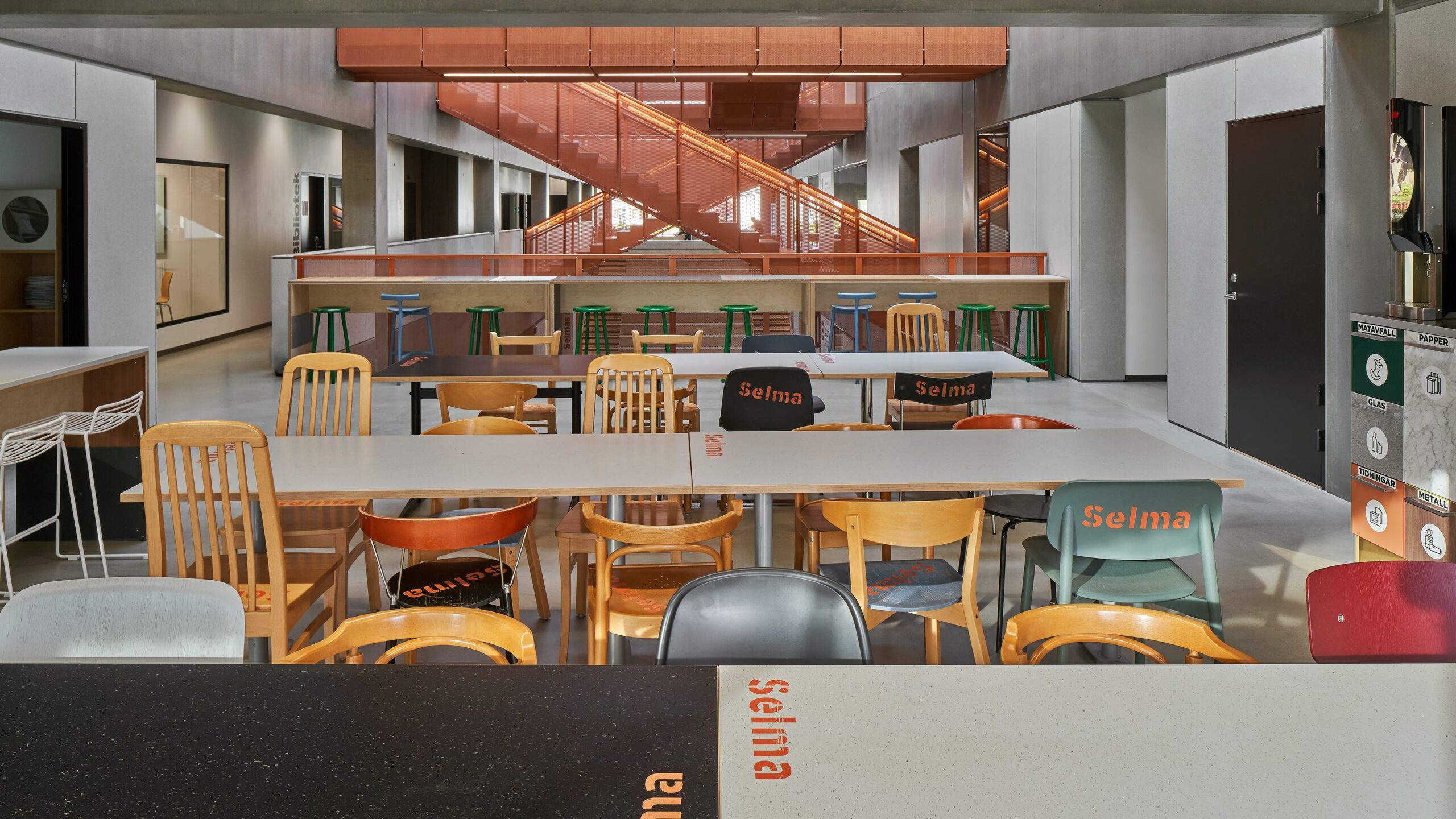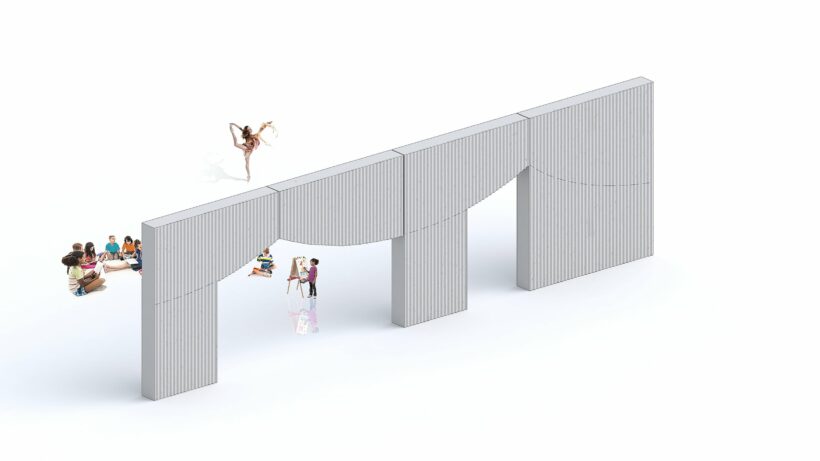A new cultural landmark
At present, the neighbourhood is known as Backa. This whole district is currently undergoing major redevelopment; this new civic building and town square will be a focal point for the emerging Selma Stad district. The mixed-use building takes the form of a three-dimensional theatrical stage with façades that resemble enormous billowing curtains; an inviting forum that celebrates creativity.
In the Selma Lagerlöf Centre, White – through strong will and creativity – has succeeded in creating one of 2019’s best Swedish interior design projects, with 92% reused furniture – resulting in 70 percent lower costs compared with the use of new materials.









